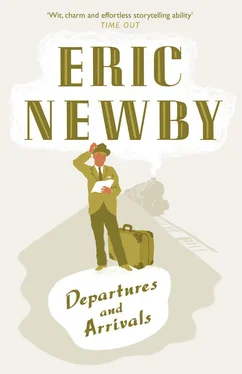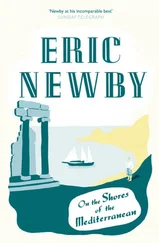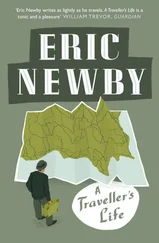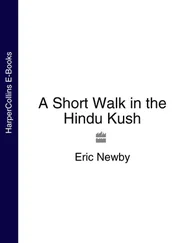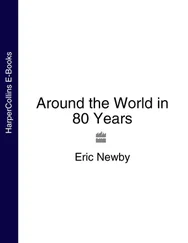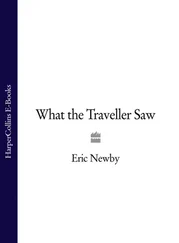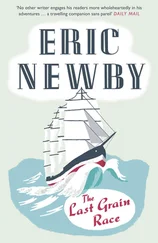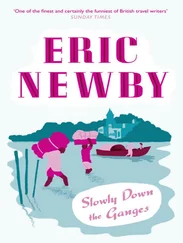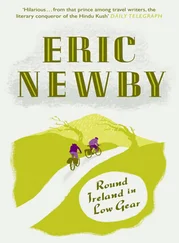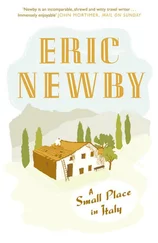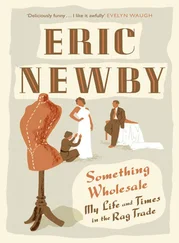This very dark, even then very old-fashioned shop, was run by a pair of what at that time were quite young people. They were still operating after the Second World War, by that time incredibly bent and ancient. They hardly ever spoke, except to say how much the bill came to, and transacted their business with all the animation of a slow-motion film of a ritual. I was frightened of them, all dressed in black.
The next roads on our left, opposite Ther Boiler, were Arundel Terrace and Merthyr Terrace, which led away down to more reservoirs and more filter beds – this end of Barnes had more water than land in it. It was also the road that led to the council allotments, one of which Wanda put in for as soon as she came to live in Barnes, the scourge of the pensioners who predicted that everything she planted would come to a sticky end. ‘All that foreign stuff won’t do ’ere,’ they prognosticated when she started planting ‘foreign stuff’ in appreciable quantities – all of which did marvels, much to their disgust.
On the corner of Merthyr Terrace there was a dairy with a plaster of Paris – well, it looked like plaster of Paris – cow in the window, and walls tiled with dairy scenes. Here, on the premises, fresh-faced girls dispensed the beverage and the milkmen delivered it to their customers from churns loaded on to horse-drawn carts.
On the opposite side of the road there was Ther Boiler. Behind it was then, and for years to come, open country. There was a farm – it must have been one of the nearest farms to the centre of London – which employed numbers of women as casual labourers. When lifting potatoes, or whatever, they worked in all weathers short of a downpour, and they wore sacks as aprons and over their shoulders, and men’s caps. They, too, came over the river from Hammersmith, but they were much tougher than the girls at the Sunlight Laundry. And there was the fishmonger’s, and the Post Office and a florist’s and the newsagent.
The last shop on our side of Castelnau was an ironmonger’s, otherwise the Oil Shop. It was painted green and had two massive amphorae over the front of it of the sort that in Mediterranean lands are used to store olive oil, which here were painted a vivid, pillar-box red.
A short distance up towards Ther Bend was the Holy Trinity church, a rather sad, perpendicular construction of 1868, a not altogether auspicious time for building churches.
I never liked it, nor did I like the Church Hall, the scene of an unsuccessful attempt to ‘interfere’ with me by a bun-faced curate when I was a member of the Wolf Cub pack. The interference only amounted to my being bounced up and down on his knee but I didn’t enjoy it, as I felt that I was too old to be bounced up and down on peoples’ knees, and I told my mother and she told my father, and my father told the vicar and the curate was sent away to wherever curates who tried to ‘interfere’ with Wolf Cubs went at that time.
Near the church during the Second World War there had been an air raid shelter which had received a direct hit by a German rocket at a time when it had been filled with local inhabitants.
Here, on the opposite side of Castelnau to the church, were the premises of Boon and Porter, motor-car salesmen. The most memorable feature of Boon and Porter was an enormous advertisement for French Amilcars painted on a brick wall a couple of storeys high. It showed them roaring round a steep bank, driven by what looked like Michelin Men.
As we approached Ther Bend the houses became progressively finer, the best of all beginning at Ther Bend itself. They were semi-detached brick and stucco residences known as Castelnau Villas, built in 1842, the earliest early Victorian, with coach houses to match, and shaded by noble trees. Even to my five-year-old mind the Villas made the Mansions and the Gardens look a bit feeble – the epitome of an elegance that has rarely been repeated.
What my mother and I most enjoyed about going up to Ther Bend was that it was there that two members of the Constabulary operated what were known as ‘Speed Traps’.
These constables were always the same ones. Both had identical bushy moustaches and both were fat and had very red faces. They could have been twins. When they saw with the aid of binoculars a car coming up Castelnau from the direction of Hammersmith Bridge that in their opinion was exceeding the speed limit, which at that time, in the twenties, was only twenty miles an hour, they rushed out of their hiding place behind one of the massive gate posts of Number 122 Castelnau Villas at Ther Bend blowing their whistles and waving a large red flag at the offending motorist. This dramatic event, which we looked forward to witnessing, invariably took place at three o’clock in the afternoon, by which time they had, presumably, digested their ‘dinner’.
On one occasion they flagged down a Rolls-Royce, the sort in which the chauffeur is isolated from the passengers and exposed to the elements.
They, the constables, were happily engaged in taking down the chauffeur’s particulars when a very small, open motor car driven by a very boozy-looking man came round Ther Bend at about sixty miles an hour, roaring with laughter and thumbing his nose at the constables who had no chance of flagging him down, let alone taking down his particulars.
And it was always at this point, at Number 122 that we turned back. Beyond it was terra incognita so far as my mother was concerned.
Later, when I was given a scooter, I was allowed to scoot up the footpath from our flat past Number 122 to Number 54 Castelnau alone. Number 54 was, and still is, an Edwardian house equipped with barge-boards and decked with finials; one of a whole lot of similar houses which extended southwards on both sides of the road as far as the Red Lion, a pub with a rampant lion over the entrance. Number 54 was the house of a Jewish family called Rosenthal. Their youngest son, Martin, was my best friend when we were both at a pre-prep school run by two impressive ladies in yet another Edwardian house called Castelnau College, and later at Colet Court, the prep school for St Paul’s and after that at St Paul’s which were opposite one another in Hammersmith Road. Mr Rosenthal, who was very all there, had worked for many years with the East Africa Company, which had laid the foundations of what are now Kenya and Uganda. Mr Rosenthal had been an intimate friend of Trader Horn, otherwise Alfred Aloysius Smith, whose reminiscences of Darkest Africa (edited by Ethelreda Lewis) had become a best-seller. Both Martin’s father and Trader Horn were heroes to us. The only trouble was that neither of us had ever set eyes on Trader Horn; but Martin very kindly said that I could pretend that I knew Trader Horn, which was what he was going to do. We soon found out that if anyone asked you, ‘I say, man, do you know Trader Horn?’ and you said yes, you were assured of social success at Colet Court, something which, up to then, Martin and myself had stood in real need. The Rosenthal house was full of African memorabilia – the very walls groaned under the weight of huge guns for slaying elephants, dinner gongs made from elephants’ tusks waiting to be banged, and the skins and heads of wild animals.
The adult Rosenthals played bridge incessantly, usually with other Jewish families to whom they were linked by marriage. Most of them lived in the same sort of houses as the Rosenthals. One of the younger sons who was about the same age as Martin and myself used to charge his mother half a crown to kiss him goodnight; but he made up for this when the war came by joining a gunner regiment and getting killed in Tunisia.
One of these families had a business in Hammersmith market. When they played bridge all of them sat at little card tables and the ladies were very elegant and made up, and whatever the weather outside – it could be a day of blazing heat – it was with the blinds drawn and the lights on. Too young to play bridge, we played vingt-et-un with the family’s ex-nurse, a rather forbidding woman of indeterminate age called Edith, and Martin’s younger sister Eva, and anyone else who could be roped in to form a quorum for a game. We ate matzos and Gentleman’s Relish, an unsuitable summer snack, while the atmosphere became more and more insupportable as the men puffed away on their big cigars. It was as someone from the Christian world outside that I attended Martin’s bar-mitzvah and the celebration of the Passover.
Читать дальше
